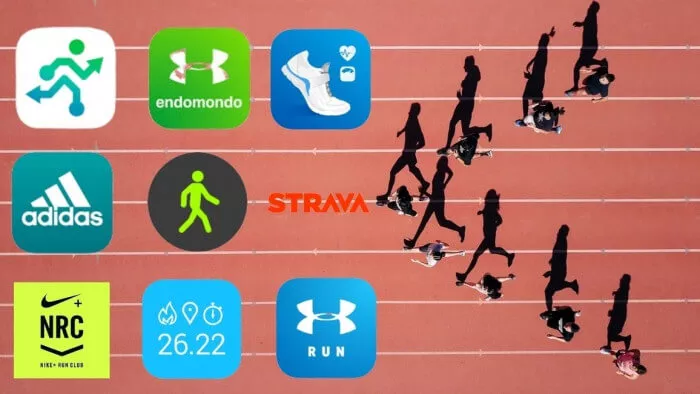
In the era of digital interconnectedness, geolocation data is indispensable. Geolocation data is not just a simple coordinate, but also a digital footprint, depicting people's actual existence in the digital world. These data provide us with key background information, allowing us to better understand people's living environment while enjoying digital services.
First, map and navigation services based on geolocation data. By providing accurate and real-time location information, maps and navigation can help us plan the best route, avoid traffic congestion, and effectively reach our destination. Whether we are traveling in the city or strolling on a country road, maps and navigation can provide us with real-time route information and traffic conditions, making our travel more convenient and efficient.
 Second, location-based services based on geolocation data. These services can provide customized services based on the user's precise location, such as weather forecast, nearby restaurants, retail stores, and tourist attractions. Through geolocation data, we can better understand the surrounding environment and resources, and thus better plan our lives.
Second, location-based services based on geolocation data. These services can provide customized services based on the user's precise location, such as weather forecast, nearby restaurants, retail stores, and tourist attractions. Through geolocation data, we can better understand the surrounding environment and resources, and thus better plan our lives.
In addition, targeted advertising is also an important application based on geolocation data. By leveraging geolocation data, advertisers can more accurately understand user interests and needs, and thus provide more accurate advertising content. This targeted advertising can reach the audience based on demographics, behavior, and geolocation, optimize marketing resources, increase engagement, and potentially lead to higher conversion rates.
With the continuous development of technologies such as 5G, the Internet of Things, and artificial intelligence, the application of geolocation data will become more intelligent and personalized. For example, by combining the high-speed and low-latency characteristics of 5G technology, more accurate positioning and navigation can be achieved; through the Internet of Things technology, the operating status and location information of various devices can be monitored in real time; through artificial intelligence technology, deep analysis and mining of large amounts of geolocation data can be performed.
Threat: The threat of faking geolocation data
Geolocation spoofing, also known as location simulation, is a tool that can change the current location by simulating the location of a mobile phone. Originally, geolocation spoofing was used to test apps, helping developers to simulate different addresses to implement the location function of the test. However, geolocation data is also facing the risk of being falsified, which brings multiple business risks to enterprises and consumers.

Fake exercise steps, affecting user experience. Running check-in is to identify the movement of the phone, GPS information, and the shaking of the phone itself by using the sensors inside the hardware, and to record the exercise steps in real time. Through the simulator cheating software, it can directly set the location on the system and run automatically according to the distance. If the App cannot distinguish between exercise fraud, it will still record the exercise amount, resulting in exaggerated and false exercise steps.
Snap up urban consumption coupons, disrupt market order. The rules for issuing consumption coupons in various places clearly state that consumers can only receive consumption coupons in their own cities. Black and gray industries can use geolocation spoofing tools to modify the location, change the IP address, and fake GPS positioning to achieve "city crossing". By breaking through the merchant's location restrictions, it is possible to batch receive "urban consumption coupons" from various cities, and then resell them at a low price.
Ride-hailing brushing orders, harming corporate interests. In order to ensure the travel experience of passengers, ride-hailing platforms usually require drivers to take orders on a daily basis, and issue rewards based on the daily order quantity. Some ride-hailing drivers use simulator tools to tamper with the GPS location of their mobile phones, fake passenger orders, and fake driving routes, including straight lines, turning trajectories, freely adjustable running speed, and dynamic running speed. If ride-hailing drivers have multiple accounts and phones, combined with order grabbing cheating tools, they can realize self-dispatching and brushing orders at home.
Identification: How to effectively identify geolocation fraud?
Compared with real geolocation, fake geolocation can be accurately identified and judged by security technology.
Operator information: Real geolocation devices have a phone number, an operator, and a signal strength that changes; the mobile system of the simulator does not have these.
System information: The brand, specific model, and serial number of the phone; the mobile system of the simulator is not real information.

Hardware information: Sensors, GPS, gyroscope, battery, voltage, battery level, temperature; the real machine will shake when held in the hand, the battery will be depleted, and the phone temperature will rise. Although the simulator has some of this information, it will not shake and is fixed.
Operational behavior: The device on a real machine has a contact book, the call log will not be 0, and there are fixed commonly used apps, because they need to be used. The simulator is generally 0 in the contact book and does not have these commonly used apps.
CPU instructions: ARM vs. X86. The instructions on the phone are ARM, and the simulator is to run on the computer, and the instructions are only X86. ARM vs. X86 is very different, and the machine code and instructions of the two can be used to judge.
App shielding: Effectively preventing geolocation spoofing
The App shielding service in Dingxiang Defense Cloud supports Android app hardening, iOS app hardening, and hardening apk. It has unique cloud strategies, business security intelligence, and big data modeling capabilities. It can effectively defend against attack threats such as memory injection, Hook, debugging, injection, multi-opening, memory Dump, simulator, App repackaging and cloning, and Safeguard sensitive app data. It can prevent App from being invaded, tampered with, cracked, and repackaged by malicious attacks. It can conduct security testing for existing applications, discover the risk vulnerabilities in the application, and carry out targeted repairs and rectifications. It can protect sensitive data, code obfuscation, code integrity, and memory data, avoiding the security impact of system vulnerabilities on the application itself from the source, and preventing the use of simulator cheating tools.
In addition, the Dingxiang App shielding service can provide mobile application security monitoring for App, and monitor the terminal device, running environment, and operational behavior of the mobile application in real time. It helps App to establish a monitoring, early warning, blocking, and tracing security system for the entire life cycle of App, from design, development, release, to maintenance.
————————————END————————————
++shared library hardening,Safeguard sensitive app data,anti-reverse engineering,in-app security,hooking frameworks,Hardening apk,Financial fraud,App shielding,App repackaging and cloning,App Hardening,Android Hardening,Android app security,Android app hardening,Android App Bundle hardening,aab hardening++


